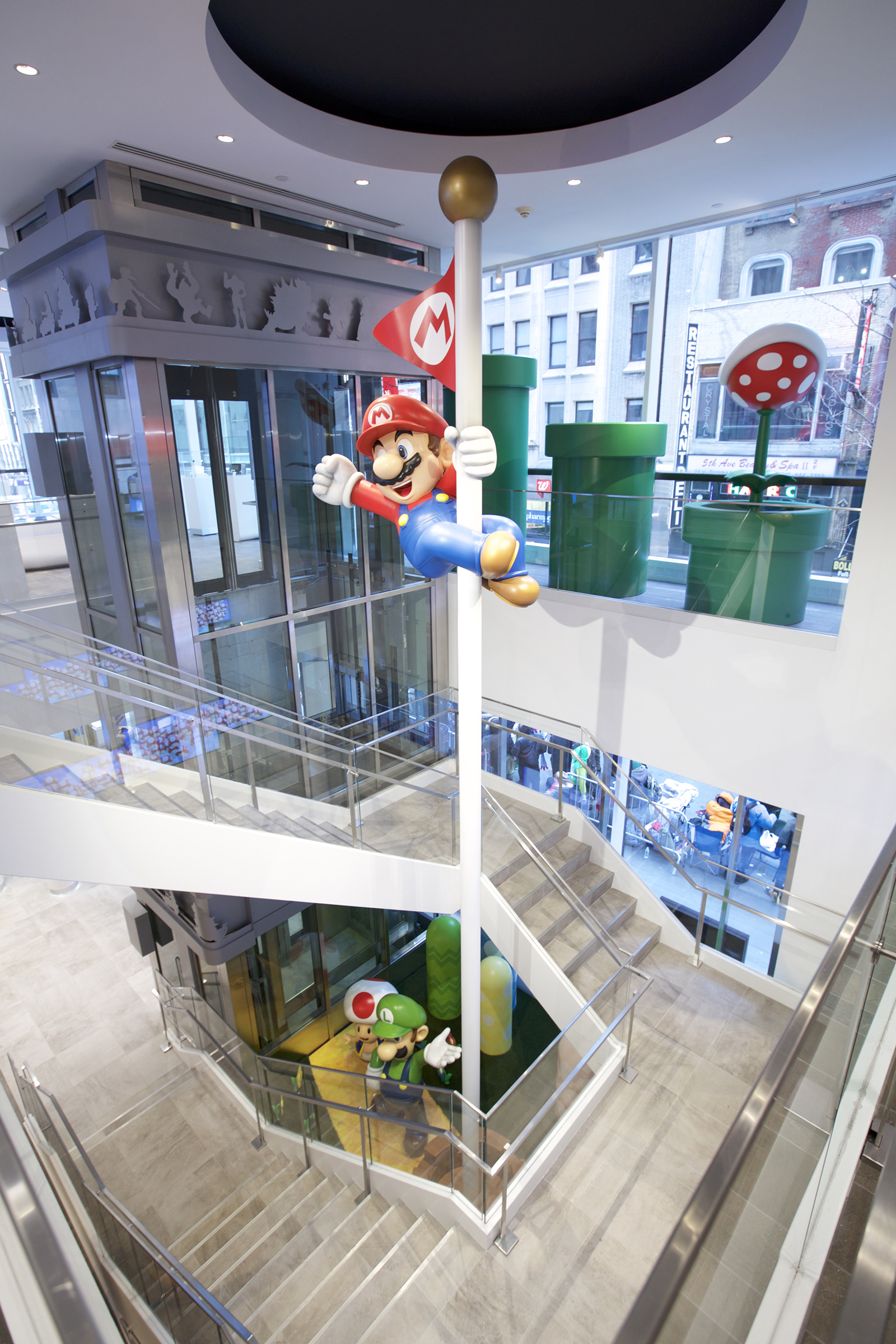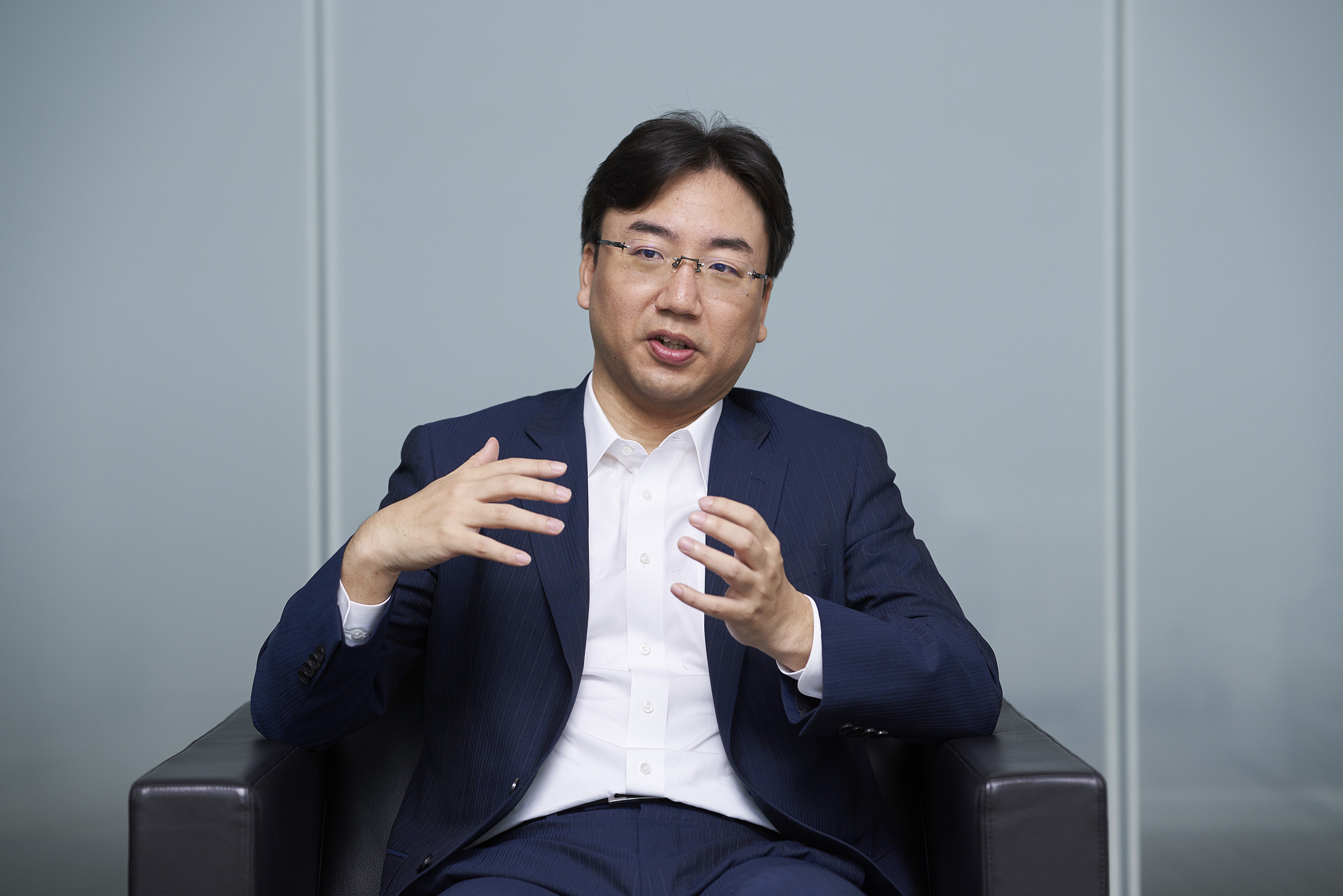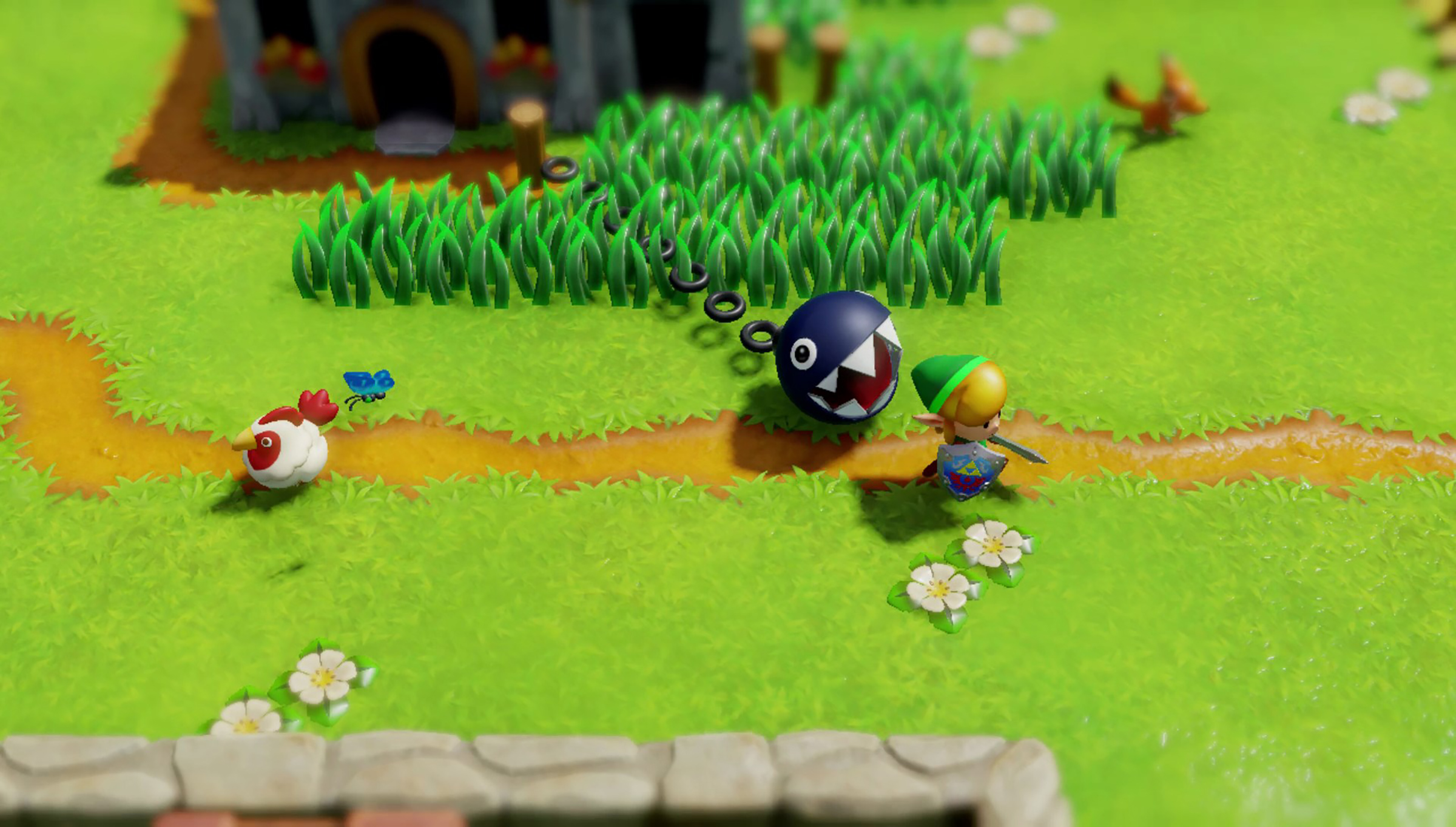
It’s a modern day ritual practiced by some of the most passionate fans on the planet: gathering to observe the reveal of new video games. In June, some of the devoted assembled to pay tribute at Nintendo’s Rockefeller Center store. Many wore Nintendo t-shirts, hats and other swag. The most hardcore dressed as their favorite characters, including one devotee in full-blown Luigi garb. They were there to watch a livestream of the company’s latest “Nintendo Direct,” a slickly-produced video announcing upcoming games and more, and get hands-on time with just-announced titles like Link’s Awakening, a remake of a 1993 classic.
These Nintendo diehards in part explain how the Kyoto-based company is thriving despite the naysayers who were forecasting doom just a few short years ago. Ostensibly a video game company, Nintendo is really an intellectual property company, converting people’s seemingly endless love of its characters into profit. Its rebound is also thanks to the Switch, a hybrid console and mobile device that has resurrected Nintendo’s hardware business, and, by extension, the rest of the company. The Switch is the exclusive home of some of today’s most well-reviewed games, and fans love that they can carry it around with them on their commutes or vacations. Nintendo, arguably stronger than ever and with a stock price flirting with its five-year high, is now looking for yet more ways to tap its deep bench of intellectual property (IP), from a theme park to a feature-length film.
At the helm during this transformative period is Shuntaro Furukawa, who in 2018 became Nintendo’s sixth president. At 47 years old, he brings a different generational perspective than his predecessor, Tatsumi Kimishima, who was 68 when he stepped aside and became an executive advisor. Having grown up with Nintendo’s earliest video games, Furukawa shares the nostalgia that many middle-aged gamers feel for the company’s creations. Furukawa, who joined Nintendo in 1994 in the accounting department and later worked at Nintendo of Europe in Germany, tells TIME that he’s committed to a strategy that has both helped and hurt the company in the past: A steadfast commitment to experimentation.
“Above all else, I base my decisions on the development leader’s way of thinking,” says Furukawa in a rare interview with Western media, and who spoke with TIME mostly through a translator provided by the company. “Nintendo is Nintendo because of our games, characters and IP. So giving our teams the freedom to experiment with new ideas is something I strongly agree with. Expansion can’t happen without the freedom to try something new, and the courage to step into unfamiliar territory.”

Back in the mid-2010s, Nintendo was in dire straights as it became clear the company’s flagship console at the time, the Wii U, was failing. With a “second screen” embedded in the controller, the system was a curious experiment, but a lack of compelling third-party games and confusion about the product dampened sales. But the surprise success of 2016’s Pokémon Go, an augmented reality smartphone game made in collaboration with Niantic, injected new life into the company. That set the stage for October of that year, when Nintendo unveiled its latest big release: the Nintendo Switch, essentially a tablet that players can drop in a dock to play games on the TV, or take with them on the go.
If the Wii U showed how Nintendo’s experimentation can go very wrong, the Switch is showing how it can go very right. Bolstered by game of the decade contender The Legend of Zelda: Breath of the Wild, the console was an instant hit. Nintendo has sold nearly 37 million Switch units; by the end of 2018 it was the fastest-selling console in the United States. “They’re having a fantastic year,” says NPD analyst Mat Piscatella. Looking at the Switch and its built-in screen, you can see what Nintendo was trying to do with the Wii U, which, if you were feeling generous, you might call ahead of its time.
Nintendo is well-poised headed into this holiday quarter. While the Switch is nearly three years old, next-generation consoles from rival companies like Microsoft and Sony won’t hit store shelves until next year at the earliest. The new Switch Lite, a slimmed-down mobile-only version of the console, plus hotly anticipated games like Pokémon Sword/Pokémon Shield and Luigi’s Mansion 3, should help. “They do try to be innovative on the hardware front, but at the end of the day, it really is their software and their IP that makes them successful,” says Blake J. Harris, author of Console Wars: Sega, Nintendo, and the Battle That Defined a Generation. But what happens when those new competitors arrive, with their superior graphics and other high-end specs? And what about games-streaming platforms like Google Stadia, which could obviate the need for consoles entirely?

Furukawa’s plan can be summed up in a single word: Entertainment. While other game companies have focused on pushing the underlying technology as far as it can possibly go, Nintendo is content to produce or promote games that are just plain fun. Furukawa says this thinking dates back through the company’s considerable ages. (Nintendo was founded as a playing card company in 1889, the same year Benjamin Harrison was sworn in as the 23rd President of the United States.) “Not just streaming, but any kind of new technology, whether that is going to be appealing to the consumer or not really depends on the quality of the experience that we can provide,” says Furukawa. “Nintendo continues to search for new ways to enhance the fun that people can have through their gaming experience.”
The best case in point here is the ridiculous, and ridiculously fun, Untitled Goose Game. While the game was created by Melbourne-based developer House House, Nintendo has promoted it heavily, and it’s only available for Switch and PC. Set in a countryside village with delightfully cartoonish graphics, players take control of a mischievous goose whose raison d’etre is to cause as much chaos as possible. Says House House’s Jacob Strasser of the Switch: “It’s the nice, friendly console. Its whole aura is one of friendliness, and it feels more inviting to non-gamers, or non-traditional gamers or players. When it came down to the decision of where we would launch, it felt like the right emotional fit.”

Speaking of whimsy: The unsung hero of the Switch system are the controllers, which, Nintendo being Nintendo, are called “Joy-Cons.” While they can be used like typical gaming controllers, their internal components — accelerometers, gyroscopes, infrared sensors — allow them to be used in all manner of bizarre, fun applications. Nintendo Labo, for instance, allows gamers to build their own controllers out of cardboard — yes, cardboard — using the Joy-Con as the “smarts.” And with the company’s new fitness-focused Ring Fit Adventure, gamers put the Joy-Con in a ring-shaped workout accessory to break a sweat while playing.
Nintendo has also fully embraced smartphone gaming, with offerings like Fire Emblem Heroes and Super Mario Run. Nintendo is still figuring out the best way to make money this way — its games have different pricing structures, and some have been more successful, both critically and financially, than others. “In terms of monetization, that’s something that we decided on an app basis,” says Furukawa. “It’s something we decide looking at the game content of each app, as well as the IP used and the player that we’re targeting. We also look at how we can best have the players enjoy the game, as well as how they would be comfortable in spending money.” Nintendo made $92 million from smartphone games in the most recent quarter, below some outsiders’ expectations but up 10% year-over-year.
For the foreseeable future, video games will lie at the core of what Nintendo does. But under Furukawa’s watch, Nintendo is seeking other, intriguing ways to make money. Construction at Super Mario World, a Nintendo-themed area of Universal Studios Japan, is set to be completed before the 2020 Summer Olympics get underway in Japan; a new Mario movie is in the works (Nintendo must be careful to avoid repeating the disaster that was 1993’s Super Mario Bros., which made $20.9 million at the box office on a budget of more than double that); and a new Nintendo megastore is scheduled to open in November. “For me, Mr. Furukawa is a bridge creating the connection from the past to our future,” says Doug Bowser, President of Nintendo of America (and a very good sport about all those jokes). “Always keeping us focused on our north star to be a company deeply devoted to originality while constantly exploring new opportunities to share our iconic characters and our deeply immersive worlds with everyone around the world.”
A company built around adored intellectual property that’s in the theme parks, movies and merch businesses? That sounds a whole lot like Disney, the M&A-obsessed pop culture behemoth that, under CEO Bob Iger, has gobbled up everything from Star Wars to Marvel. Asked if the Mouse House is a model for Nintendo’s future, Furukawa doesn’t bite. “We’ve never tried to imitate any other company,” he says, later adding that “the idea of using our IP in things like theme parks or movies is simply an extension of the philosophy we’ve had all along.” And to be sure, Nintendo’s strategy is less about acquisitions and more about in-house creations. But, wandering around Nintendo World, with its shelves upon shelves of Mario t-shirts, stuffed Yoshi dolls and other Nintendo paraphernalia, the comparison to an Orlando gift shop is unavoidable. Nintendo may never become quite as dominant as the house that Walt built, but for many of its fans, it has at least the same power to inspire nostalgia and joy — and convert those emotions into big dollars.
More Must-Reads from TIME
- Cybersecurity Experts Are Sounding the Alarm on DOGE
- Meet the 2025 Women of the Year
- The Harsh Truth About Disability Inclusion
- Why Do More Young Adults Have Cancer?
- Colman Domingo Leads With Radical Love
- How to Get Better at Doing Things Alone
- Michelle Zauner Stares Down the Darkness
Contact us at letters@time.com